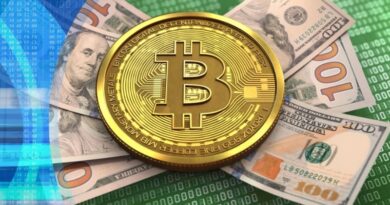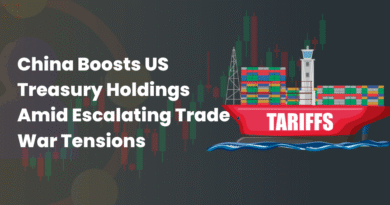Unichain Launches MEV Reduction and Fair Sequencing for Blockchain Efficiency
How Unichain’s New Update Makes Blockchain Fairer and More Efficient
Blockchain technology has brought us closer to a fair and decentralized future. But even with all its benefits, there’s one big issue that continues to affect users and developers—MEV.
If you’ve never heard of MEV before, don’t worry. We’re going to walk you through what it is, why it matters, and how Unichain’s latest upgrade is addressing it in a new way with fair sequencing and MEV reduction.
Let’s break it down.
What Is MEV, and Why Should You Care?
MEV stands for “Maximal Extractable Value.” Sounds complicated, right? But it’s actually easy to understand.
Whenever you send a transaction on a blockchain—like trading tokens or buying an NFT—it has to be added into a block by validators. These validators decide which transactions go into each block and in what order.
Here’s the problem: some validators or bots try to reorder transactions to make extra money. They may prioritize their own trades before yours or sneak in trades between yours to profit. That’s MEV.
Why’s this an issue?
- Unfair advantages: Bots and insiders can score profits while regular users lose out.
- Higher fees: Competing to get into blocks raises transaction costs for everyone.
- Less trust: If users believe the system isn’t fair, they might stop participating.
That’s where Unichain comes in—with a new way to level the playing field.
What Is Unichain Doing Differently?
Unichain is introducing something fresh: MEV reduction and Fair Sequencing. These two features aim to make things more transparent and equitable for all users.
Think of these updates like adding clear rules in a game. Everyone gets a fair shot, and you don’t have to worry about someone cheating to win.
Let’s start with MEV reduction.
How MEV Reduction Works
Unichain’s approach to reducing MEV is based on minimizing the ability of anyone to reorder or insert transactions unfairly.
Here’s how:
- Transparency: Unichain exposes all transaction ordering so it’s visible to everyone.
- Predictable flow: Instead of letting anyone reorder transactions for profit, it fixes the order based on who sent them and when.
- Anti-front-running design: The system is built to block the kind of trades that let bots jump ahead of you.
Let’s say you want to swap one crypto for another. On older platforms, a bot could notice your trade and race ahead—buying before you to sell back at a higher price. With Unichain’s MEV-resistant design, that’s no longer possible.
What Is Fair Sequencing?
Fair sequencing is exactly what it sounds like. It ensures that transactions are ordered properly and fairly—based on when they were submitted, not based on who can pay more.
With Unichain’s fair sequencing, nobody can cut the line.
This makes the network:
- More efficient, because blocks can be filled faster with fewer conflicts.
- More secure, since MEV attacks are harder to pull off.
- More equitable, where all users get the same chance to participate.
It’s a bit like forming a line at a coffee shop. No one should be able to skip ahead just because they slipped extra cash to the barista.
Why This Matters for Everyday Users
You might be thinking, “I’m not a blockchain developer. Why should I care?”
Good question. These upgrades affect everyone on the network.
Here’s why it benefits you:
- Lower fees: Less competition for spots in a block can bring down costs.
- Faster transactions: Fair sequencing makes the system run smoother and quicker.
- Trustworthy ecosystem: When platforms operate fairly, people are more confident using them.
Whether you’re minting NFTs, investing in DeFi, or just sending tokens to a friend, Unichain’s improvements help you avoid getting the short end of the stick.
An Example to Paint the Picture
Imagine you and your friend both want to buy a rare NFT at the same price. You send your order before them. But a bot sees your transaction and jumps in seconds before you—grabbing the NFT and selling it at a markup.
That’s frustrating.
With Unichain’s fair sequencing rules, whoever submitted first gets in first. No sneakiness, no bots stealing the spot.
You can finally participate in blockchain activity without worrying about being outplayed by complex tools or insider knowledge.
What Sets Unichain Apart?
It’s not that others haven’t tried to fix this. But Unichain combines a few unique strengths:
- Integrated MEV resistance: Built into the core, not just patched on.
- Decentralized control: No centralized team can change the rules behind the scenes.
- Built for scale: Designed to grow without performance compromise.
This full-stack solution means MEV reduction and fair sequencing aren’t temporary fixes—they’re permanent building blocks.
What’s Next for Unichain?
With these new features live, developers and users can start building with more confidence.
You might start to see:
- New DApps using Unichain for transparent trading
- DeFi platforms moving over for lower MEV exposure
- Communities growing around a fairer blockchain experience
It’s a big shift, and one that could reshape how we think about blockchains—not as places where only the fastest or richest win, but where participation is open and fair for all.
Final Thoughts
Blockchain is all about decentralization and fairness, but MEV has threatened that vision.
Unichain is showing what’s possible when a platform takes those values seriously. By cutting down on MEV and setting fair rules for how transactions are handled, it’s building a system that feels less like a race and more like a community.
So, if you’re a user, developer, or anyone interested in a better blockchain experience, keep an eye on what Unichain is doing. This could be the start of a more fair and efficient future for digital transactions.









